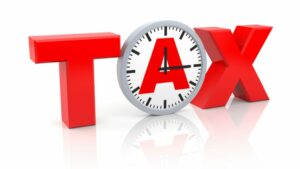Company Stock in 401(k) Plans May Help Laid off Workers Bridge Financial Gap
Spirit AeroSystems Workers Could Benefit from Little‐known IRS Rule
Laid off workers from Spirit AeroSystems, Inc., may find financial relief in a little‐known IRS rule that provides a tax‐advantaged way to turn company stock held in retirement plans into immediate cash. If you qualify, your 401(k) may help sustain you financially as you search for another job.
The IRS rule governs treatment of net unrealized appreciation (NUA), which refers to the difference between what you paid for the company stock in your 401(k) and what it is worth today due to gains in stock value.
For example, say you have worked at Spirit AeroSystems for 10 years and you have company stock in your 401(k) valued today at $125,000. Through salary deferrals, you paid $30,000, an amount that is referred to as your cost basis. The difference between your cost basis and the stock’s current market value – in this case, $95,000 – is your NUA.
In an ideal world, that stock would keep growing for you. But it’s not ideal. You’ve been laid off, and you need cash to pay for living expenses while you look for another job.
That’s where the unique treatment of NUA in certain circumstances may help.
How It Works
There are three options for withdrawing assets from your 401(k). First, you can take the entire distribution as cash and pay ordinary income tax on all assets plus a 10% penalty if you are under the age of 59 ½. Second, you can roll the 401(k) account, including company stock, into a personal IRA and pay tax upon distribution as needed, plus a 10% penalty under age 59 ½. The third option would enable you to take advantage of the IRS rule governing NUA of company stock and transfer the stock into a taxable account.
Typically, if you transfer assets out of your employer’s 401(k) and into a taxable account, you pay income taxes on the full market value as ordinary income. However, under the IRS treatment of NUA on company stock, you pay income tax only on the cost basis – not on the gains. So, in the scenario above, you would pay income taxes on only $30,000 as ordinary income. The value of the gains ‐ $95,000 in today’s market – would not be immediately taxed.
If you were to then sell the company stock at its current market value, the proceeds would be taxed at the long‐term capital gains rate of 0%, 15% or 20%, depending on your taxable income. If your adjusted gross income placed you in the 22% or above tax bracket, you could achieve significant tax savings with this strategy. The highest capital gains tax rate of 20% is far lower than the highest individual income tax rate of 37%, so the potential for tax savings using the NUA strategy is clear.
An Illustration
Stephanie has worked for her company for 20 years and has $400,000 in her 401(k), of which $100,000 is company stock. Her cost basis for the company stock is $20,000. She is laid off along with 150 other employees.
Stephanie decides to take the opportunity to start a business of her own, and she needs some cash to fund her startup. She transfers $300,000 of the funds in her 401(k) to an IRA, and shifts the $100,000 in company stock to a taxable account.
Remember, she’s liable for taxes on the cost basis ‐ $20,000 – as ordinary income, and Stephanie, a single woman who was a junior executive, is in the 24% tax bracket. So she pays $6,800 in taxes on her cost basis (including a 10% penalty since she is under age 59½).
She then sells the company stock and realizes the $80,000 gain. At her income level, she is liable for a 15% capital gain tax – or $12,000.
After the taxes and penalties are paid, Stephanie has $81,200 in her pocket.
Had she not used the NUA strategy, she would have paid ordinary tax plus the penalty on the $100,000. Assuming that additional income would increase her tax bracket to 32%, she’d have paid $42,000 in taxes and penalty for a net $58,000 in her pocket, $23,200 less.
Long Term Strategy
Even if you don’t need cash immediately, you can convert the company stock to a taxable account and enjoy the capital gain treatment on the gain when you decide to sell in the future. This requires you to pay tax on the basis now, but it will delay the capital gain treatment on the gain until the stock is sold.
Who Qualifies?
To qualify for application of the NUA rule, several rules apply:
- You must have experienced one of the following:
- Termination of your employment from the company, either voluntary or involuntary (as in the case of a layoff).
- Reached age 59½
- You have experienced a total disability (for self-employed workers only)
- Death
- The company stock must be distributed as actual shares, so don’t convert it to cash before distribution.
- The entire vested balance in your plan must be distributed within one tax year.
- If you have assets in more than one qualified plan with your employer, assets from all plans must be distributed, even if your company stock is held in only one plan.
Before You Act
Being laid off is an unsettling event and you may be anxious about your ability to meet living expenses. But before turning to your 401(k) as a source of cash, be sure to consult your tax advisor about the tax implications, and your financial planner to determine how tapping your retirement plan will impact your long‐term savings plan.


